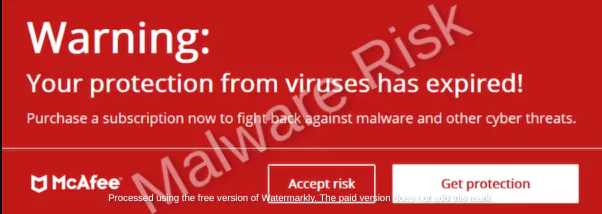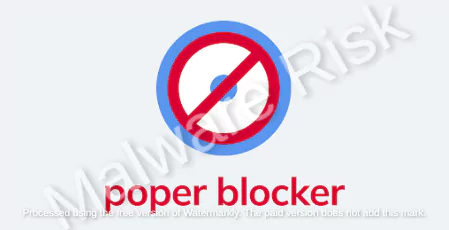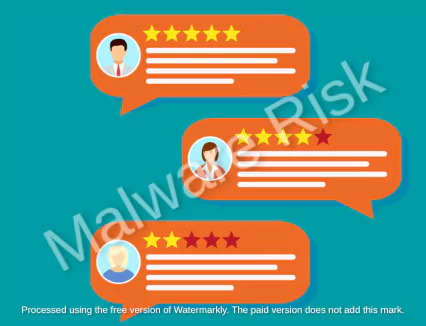In this evolving digital age, where more and more people are resorting to the internet for their everyday needs, cybercrimes are becoming increasingly prevalent. Among these, tech support scam popups can be a disturbing and significant issue for many internet users. This deceptive type of cyber fraud aims at tricking you into believing that your computer is infected with viruses and it’s necessary to immediately seek tech support. Our main focus here is to provide useful knowledge on how to recognize these fraudulent popups, the utilities of dedicated popup blockers, specific tools for malware removal, and general safe practices for internet usage.
Quick Links
Recognizing Tech Support Scam Popups
Identifying Tech Support Scam Popups
Tech support scam popups are a common form of online scam. These scams attempt to trick you into believing that your computer has a virus or other problem, and that you need to pay for unnecessary tech support services to fix it. To identify these scams, look for popups that tell you your computer has a virus or is being hacked. Often, these popups include a phone number to call for tech support.
Common Features of Scam Popups
Tech support scam popups often have common features that can help you identify them. They may use scare tactics such as warning messages or countdowns to put pressure on you to act quickly. They often use the logos of legitimate companies to appear reliable. These scams may also use popups that are difficult to close or that keep reappearing even after you close them.
Difference between Legitimate and Scam Popups
Legitimate notifications from your security software will typically not ask you to call a specific phone number. Instead, they will suggest performing a scan or updating your software. Legitimate companies won’t ask for payment information over the phone.

Scam popups, however, might tell you that your system is infected with a virus and that you need to call a tech support number. They might ask you to pay for services or provide remote access to your computer.
Familiarizing with Scam Techniques
Being familiar with the techniques used in tech support scam popups can help you prevent clicking on scam links inadvertently. Scammers often use social engineering techniques to trick you into providing personal information or payment. They may use deceptive dialog boxes, misleading graphics, or fake error messages to create a sense of urgency or fear.
If you encounter a popup that you believe is a scam, you can avoid clicking on it by closing your browser completely or using your operating system’s task manager to end the process. If you are uncertain about a popup, you can research it online or ask a trusted friend or family member for help.
Tip: Keep in mind that real tech companies will never contact you unsolicited to tell you that your computer has a problem. Always verify any information you receive and never provide your personal information or payment to unsolicited calls or popups.
Use Dedicated Popup Blockers
Exploring Various Popup Blockers
Various popup blockers are available online to help manage tech support scam popups. Adblock Plus, Poper Blocker, adaware ad block, and Ghostery are just a few examples. These popup blockers are usually browser extensions that work by intercepting the popup before it appears on your screen. They’re configured to recognize characteristics commonly associated with spam or scam popups, and to block those by default.

Each popup blocker has its pros and cons in terms of efficiency, speed, ease of use, and degree of customization. It’s crucial to read user reviews and expert analyses to determine the effectiveness of a popup blocker. This will contribute greatly to managing tech support scam popups.
Installing a Trusted Popup Blocker
Once you’ve conducted thorough research and selected a popup blocker, the next step is to install it. The installation process is often straightforward and requires only a few steps. Most popup blockers can be installed as a browser extension or add-on. Simply visit the official website or online store of the tool and follow the provided instructions.
Regularly Updating Your Popup Blocker
Updating your popup blocker regularly is an essential step often overlooked. Developers continuously refine and update their software to address new forms of scams and threats. Therefore, it’s crucial to keep your popup blocker up-to-date to ensure your protection against emerging tech support scam popups.
Most popup blockers will auto-update by default when connected to the Internet. However, it’s a good practice to manually check for updates or set reminders to do so periodically. This can often be done through the settings or preferences menu of the plugin or tool.
Proxy-Based Popup Blockers
Another option for blocking unwanted popups, including tech support scam popups, is using a proxy-based tool. These work by redirecting your online activity via their servers, stripping out unwanted ads in the process. Some popular options include the Tor project and certain VPN providers.
By following these steps, you can significantly reduce the chances of encountering tech-support scam popups, making your browsing experience safer and more enjoyable.
Malware removal tools
Choosing a Malware Removal Tool
Choosing the right malware removal tool for your needs is a crucial step in dealing with tech support scam popups. There are many free and paid malware removal tools available. When researching for the right tool, ensure it specifically mentions handling tech support scam popups. Some commonly used malware removal tools include Malwarebytes, Spyhunter, and Combo Cleaner.
Researching Product Specifications
Each malware removal tool will have its own set of features. Check the specifications of each product to determine if it offers the necessary capabilities you need. Look for the ability to remove adware, potentially unwanted programs (PUPs), or tech-support scams. It’s also beneficial to check if tools offer real-time monitoring that actively prevents new infections.
User Reviews and Ratings
User reviews and ratings can provide invaluable insights into the effectiveness of a tool. Look for platforms such as TrustPilot, Amazon, or the tool’s official website, where users have left reviews of the product. Pay special attention to what users have said about the tool’s ability to remove tech-support scam popups.

Ease of Use
The malware removal tool’s layout and ease of use are factors worth considering. Some tools require advanced knowledge to navigate and use effectively, while others are designed to be user-friendly. Tools with One-Click Scan and Clean features can be convenient for beginner users.
Customer Support and Tutorials
Your chosen malware removal tool should have a robust support system. This could be in the form of FAQs, guides, video tutorials, or chat support. These resources come in handy when you encounter difficulties during the installation or the scanning and cleaning process.
Investigating the Software Company
Finally, investigate the reputation of the software company that developed the malware removal tool. Check whether they have been in business for a while and whether they have any complaints lodged against them. A company with a good reputation will usually produce reliable and effective software.
Recommended Internet Safety Practices
Understanding Safe Internet Practices
To start on the path of safe internet practices, it’s important to understand what these entail. These are actions and precautions taken by internet users to protect their personal and financial information from being exposed to malware or scam artists.

Among these practices is the basic rule of not clicking on suspicious links. These links often appear in unsolicited emails or messages, on questionable websites, or in the form of unexpected pop-ups. They may appear harmless, but clicking them can lead to your device being infected with malware or you being led to fraudulent websites.
Downloading Files From Unknown Sources
Another common way that malicious software can end up on your device is through the download of files from unknown or unverified sources. Many tech support scams spread through software or media files that may look legitimate but have been tampered with to include malware. Hence, it is crucial to only download files from well-known, reputable websites, and avoid downloads that are offered through unsolicited emails or messages.
Providing Personal and Financial Information
Entering your financial details or personal information without first verifying the authenticity of the website is a very risky move. Scam websites are designed to look like legitimate sites, but their true goal is to gather your information for criminal purposes. Always check that there’s a padlock symbol in the website address bar, meaning that the connection is secure. Moreover, check the spelling of the website address carefully – many scam sites use misspelled versions of popular websites to trick users.
Regular Software Updates
Most software developers regularly release updates. These updates often include security enhancements that protect your device from recent threats. As such, keeping your software up-to-date is a good way to reduce your risk of falling victim to a tech support scam. This also includes updating your web browser, which is often the first line of defense against malicious web activity.
Installing a Reliable Security Suite
A good security suite can add an extra layer of defense against tech support scams. These software packages can detect and block known threats, warn you when you’re about to visit a dangerous website, and even help remove malware if it manages to sneak onto your system. Look for a suite that offers comprehensive protection, and ensure it is kept up to date.
Verdict
Keeping the internet safe is a shared responsibility that each of us plays a part in. Understanding how to identify tech support scam popups, using blockers to prevent them, and deploying malware removal tools to eliminate them are all essential steps. However, prevention is better than cure. Hence, becoming accustomed to safe internet practices marks the first line of defense against such scams. Always remember that no legitimate organization would ever ask for your confidential information via pop-ups or instigate immediate action through panic. Stay vigilant, stay safe! If you notice something wrong in the steps or article, Click here to suggest

Nishant Verma is a senior web developer who love to share his knowledge about Linux, SysAdmin, and more other web handlers. Currently, he loves to write as content contributor for ServoNode and also collaborated with MRLabs now.

